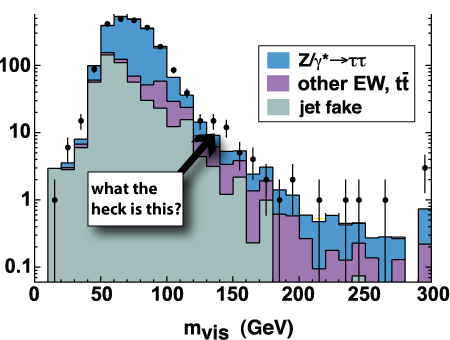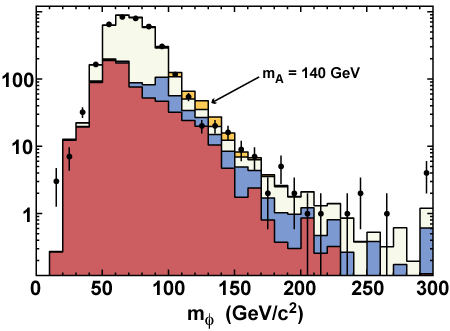Two of the best science-blog articles of 2007 appeared early in the year at Cosmic Variance. They were written by John Conway (not the John Conway, the other John Conway) and gave an inside view of what happens in a large experimental collaboration when there’s a hint of glory in the air. The CDF experiment—one of the two large detector groups at the Fermilab Tevatron—had found a bump, and it could be a sign of the fabled Higgs boson, the one Leon Lederman called the God particle. As Conway put it: “Holy crap!”
The bump consisted of a few data points that stood two standard deviations above the expected background level.

In medicine, two sigma is plenty of significance to decide whether a new drug will cure you or kill you, but physicists are more discriminating. Conway explained that they really needed five sigma to claim a discovery, although a lesser level might qualify as “evidence” or “indication.” Two sigma could too easily be dismissed as a statistical fluke.
Today Conway has posted the long-awaited followup. With a larger data sample, those dots and whiskers are back in their bins:

Conway is totally forthright about this outcome:
Gone! The data points all fell within an error bar or so of every bin…no excess, no bump, no Higgs… I am sure you are thinking “no tickets to Stockholm” too.
He then goes on to engage in a little preemptive spin control, in a paragraph aimed straight at the likes of me:
Now, gentle readers, one thing we’ve learned is that among you are many science journalists who use blogs as a means to catch wind of breaking news. You all have to have an angle, and a story to tell (sell). In the past, our field has been treated to stories of the ilk “300 Physicists Fail to Find Supersymmetry” with the subtitle “Study Illustrates the Risks of Big Science”. (New York Times, 1993). I sincerely hope that’s not your angle here, science writers! Our favorite put-down of that is to ask whether there should have been an 1888 story titled “Physicists Fail to Find Ether in Vacuum” about the Michelson and Morley null result. But okay, we’re nerds.
If I weren’t such a thick-skinned cynical journalist, I might chafe a little at this scolding-in-advance. I might ask, for example, what headline should have appeared on a contemporaneous story about the Michelson-Morley experiment. Is Conway suggesting that the Higgs boson is in the same conceptual category as the electromagnetic ether?
But I want to set aside my own defensiveness, and also try to disarm Conway’s. Even if we loutish journalists refrain from public cackling at this delicate moment, it seems all too likely that the next time Conway spots a two-sigma bump, he’s going to keep his mouth shut and his head down. We’ll all be the losers if that happens. What was so refreshing about this affair was that we could all follow the story as it unfolded, rather than waiting for the carefully vetted post-hoc redaction. (Given the eventual negative result, if the bump had been kept under wraps at the outset, we might never have heard of it at all.)
Conway concludes on a rousing note:
I challenge you journalists out there to tell it like it is: this is a great human adventure, with all the twists and turns any good adventure has.
Yes! I second that emotion. But we journalists can report the twists and turns only if we get to follow the twists and turns along with you, including the wrong turns.